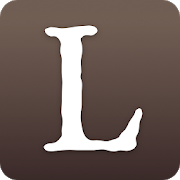Focusing by Eugene T. Gendlin was my first book I really wanted to give up on this year. I’m always very hesitant to pick up non-fiction books, especially those that touch on self-help or psychology in any way. There’s so much misinformation and only mildly informed, untested theory out there, and I’m just not qualified to judge what is good and what isn’t. It’s frustrating.
Focusing was recommended to me, but it starts out trying to sell me things. It tries to sell its own brilliance (“couldn’t do without it!”), and innovation (“studying some questions that most psychotherapists don’t like to ask out loud”), and services (repeated mentions of telephone advice services available). If your book tries to sell me on its brilliance and related services without even presenting its case first, I feel like the door-to-door salesman just rung to sell me a washing machine that I don’t need. The writing is always either selling or talking down to the reader and I found it very offputting – I don’t like the cheap manipulation that comes with this style of writing.
The core idea is listening to your body, and experiencing bodily shifts (positive feelings of a knot opening etc) when trying to figure out a problem – a meditative practice. This is very plausible to me, but the writing made it hard to get through the material. So, spoilers, here is their methodology:
- Calm down: Sit down, calm down, breathe for a bit. Then list the things that feel like they’re currently a problem for you.
- Choose the problem you want to work on. Keep an emotional distance and instead figure out how your body feels when concentrating on that problem (this will be uncomfortable). Disregard your inner monologue (i.e. analysis, guilt, etc.).
- Focus on finding the word (or a very short phrase) that exactly describes your feeling regarding the problem. You’ll notice when you hit on the right one, because your feeling will change (usually ease). This will take a while.
- Compare the word/image you found in the last step and compare them with the feeling you found and defined in the second step. Make sure they match (i.e. trigger a shift in feeling), otherwise repeat 3. Pay attention to how your feeling shifts now that you have a good name for them.
- Trigger a clearer understanding by focussing on the name you found and concentrating on some questions, like “What about this problem makes me _?”, or “What’s the worst/most _ about this?”, or “What would it take for this to feel ok?”. Wait for the answer to bubble up, don’t trust fast answers (which are probably just preconceived notions of how your mind should work.)
- Accept the answers you find, without judgement. You can always decide to disagree with them later, but you have to accept them without judgement first.
The first step is a bit like unfocused meditation or metta meditation. I liked the question “How would my body feel if this problem was somehow solved?” as an entrypoint to exploring a problem. The other steps are more focused meditation, and all involve being calm, slightly distanced, and taking some time (at least half a minute or a minute) of waiting for answers to show up. Not terribly exciting, and worse for the fact that it sees itself as more of a therapy approach as opposed to a meditation thing.








